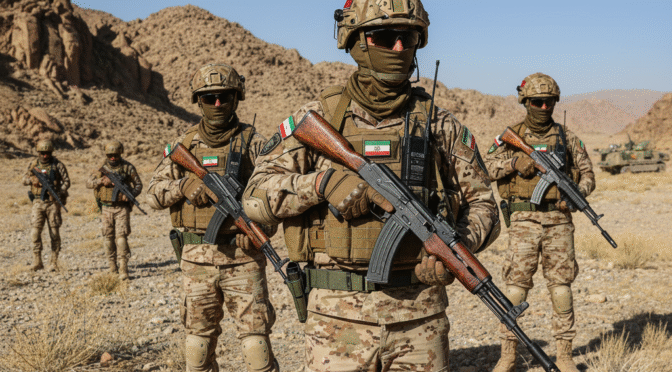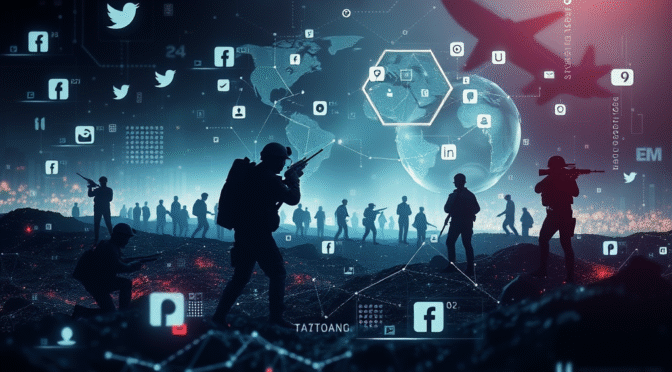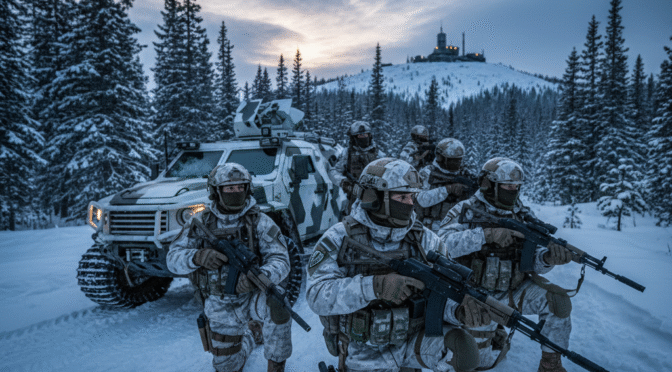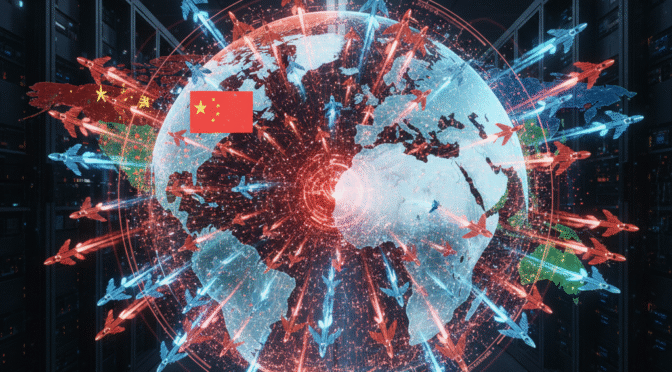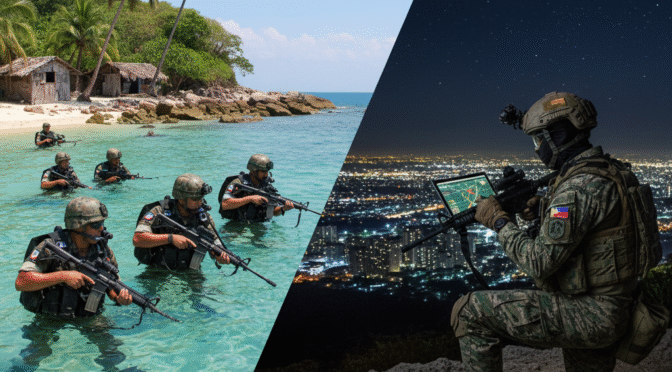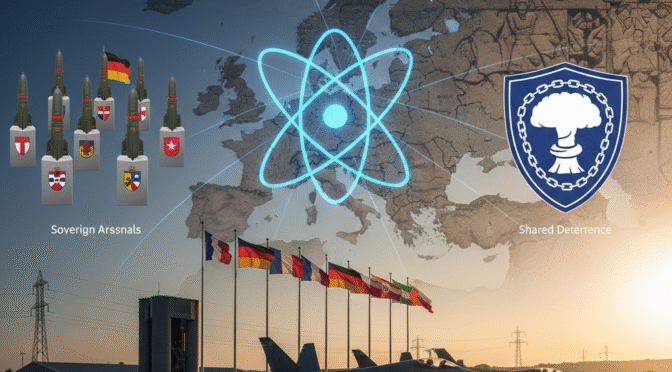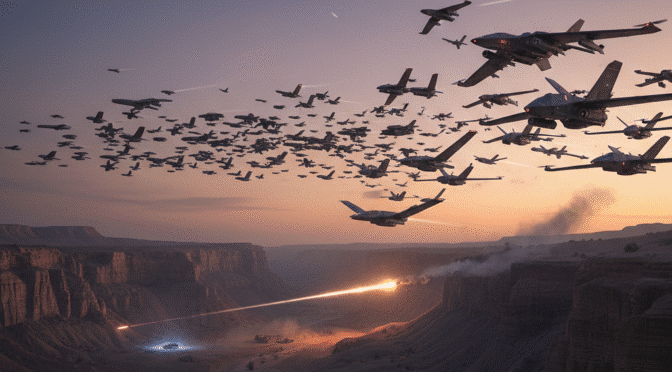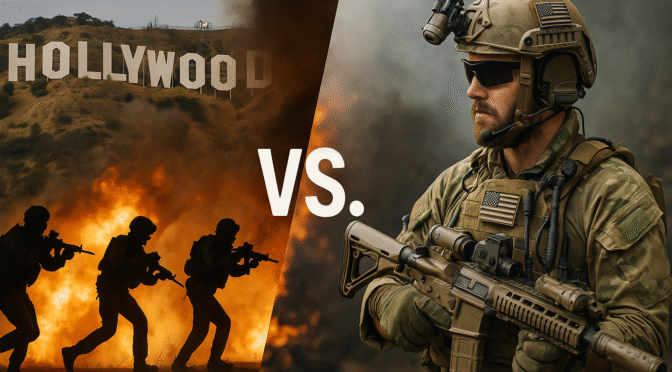To comprehend the distinct roles and evolutionary trajectories of Iran’s elite special operations forces, one must first understand the unique and deliberately bifurcated structure of its national military apparatus. The armed forces of the Islamic Republic of Iran are not a monolithic entity but are composed of two powerful, parallel, and often competing institutions: the Islamic Republic of Iran Army (the Artesh) and the Islamic Revolutionary Guard Corps (Sepah-e Pasdaran-e Enghelab-e Eslami, or IRGC). Both are subordinate to a single commander-in-chief, the Supreme Leader, a structure that bypasses the elected presidency and concentrates ultimate military authority within the clerical establishment.1 This dual-military system is the foundational context in which the Artesh’s 65th NOHED Airborne Special Forces Brigade and the IRGC’s Quds Force were born and have evolved.
The Artesh is Iran’s conventional military, the inheritor of the legacy of the pre-revolutionary Imperial Iranian Armed Forces. Its constitutional mandate is the defense of Iran’s territorial integrity and national borders against external aggression.3 The Artesh comprises traditional ground, naval, air, and air defense forces and operates the majority of Iran’s heavy conventional platforms, including tanks, major surface combatants, and fighter aircraft.1 However, decades of international sanctions have severely degraded its ability to maintain and modernize this arsenal.1 Following the 1979 Islamic Revolution, the new clerical leadership under Ayatollah Ruhollah Khomeini viewed the Artesh, with its Western training and historical loyalty to the Shah, with deep suspicion.2
This distrust was the primary catalyst for the creation of the IRGC in April 1979. Established by Khomeini’s decree, the IRGC was conceived as a deeply ideological “people’s army” and a praetorian guard whose primary function was not to defend the borders, but to protect the Revolution itself from both internal and external threats.1 Its constitutional role is explicitly the preservation of the revolutionary system.4 Over the subsequent decades, the IRGC has evolved from a paramilitary militia into Iran’s dominant military, political, and economic institution, wielding immense influence across all sectors of the state.3 It is geared toward asymmetric warfare and is the primary custodian of Iran’s most critical strategic assets, including its ballistic missile and unmanned aerial vehicle (UAV) arsenals, and is responsible for managing Iran’s network of regional proxies through its expeditionary arm, the Quds Force.1
This structure is not an accident of history but a calculated strategy of institutionalized redundancy designed to ensure regime survival. By creating two powerful and parallel military organizations, each with its own command structure reporting directly to the Supreme Leader, the regime engineered a system of internal checks and balances. This arrangement effectively prevents any single military faction from accumulating sufficient power to challenge the clerical government, a lesson drawn from the 1953 coup that overthrew Prime Minister Mohammed Mossadeq and restored the Shah to power.2 This internal dynamic, characterized by competition for resources, influence, and the Supreme Leader’s favor, is a defining feature of Iran’s defense posture. The existence and divergent development of the Artesh’s 65th NOHED Brigade and the IRGC’s Quds Force are the direct manifestation of this dual-pillar strategy at the apex of Iran’s special operations capabilities.
II. The 65th NOHED Airborne Special Forces Brigade: The Artesh’s Elite Tip
The 65th NOHED Brigade represents the pinnacle of the Artesh’s special operations capabilities, a unit forged in the Western mold but tempered by decades of regional conflict and loyalty to the Islamic Republic. Its evolution from an Imperially-sponsored, US-trained commando force to a modern expeditionary unit is a testament to its institutional resilience and tactical adaptability.
Inception and Imperial Legacy: U.S. Special Forces Influence and Early Operations
The origins of the 65th NOHED Brigade are deeply rooted in the Western military tradition, a legacy that distinguishes it from its IRGC counterparts. The genesis of Iranian airborne forces began in 1953, when a contingent of ten Imperial Iranian Army officers was sent to France for parachute training.8 This led to the establishment of a formal Parachute Unit in 1955, which expanded into a Parachute Battalion by 1959.9
The pivotal year was 1959, with the establishment of the 23rd Special Forces Brigade, the direct parent unit of what would become the 65th.9 During the 1960s, this nascent force was shaped profoundly by American mentorship. Under the Shah’s pro-Western alignment, the United States dispatched advisors from the John F. Kennedy Special Warfare Center & School to train and structure Iran’s special forces.8 This American influence was not superficial; it was embedded in the unit’s DNA. The brigade adopted the iconic green beret of its American trainers, and its qualification badge was designed to be nearly identical to the US Army Special Forces’ “De oppresso liber” insignia, a clear visual marker of its doctrinal heritage.8
This Western-style training was soon put to the test. In the early 1970s, the brigade, then known as the 23rd Airborne Special Forces Brigade, received its baptism by fire in the Dhofar Rebellion in Oman.9 Deployed to assist the Sultan of Oman in combatting Marxist-Leninist guerrillas, the Iranian forces engaged in a classic counter-insurgency campaign, the very type of unconventional warfare for which their American advisors had prepared them.11 This early operational experience cemented the unit’s reputation as a capable and professional fighting force.
Post-Revolutionary Crucible: The Iran-Iraq War and the Forging of a Modern Identity
The 1979 Islamic Revolution placed the Western-trained 23rd Brigade in a precarious position. The new regime was inherently suspicious of any institution associated with the Shah and his American patrons. This distrust culminated in a call by then-parliament-member Hassan Rouhani to disband the unit following the 1980 Nojeh coup plot, in which some military elements were implicated.9 However, the unit was saved by the staunch opposition of Defense Minister Mostafa Chamran, who recognized its strategic value.9
The crucible that would reforge the unit’s identity and prove its loyalty to the new republic was the Iran-Iraq War (1980-1988). As part of the 23rd Commando Division, the brigade was deployed extensively across all fronts of the brutal, eight-year conflict.8 The war demanded a broad spectrum of skills. The unit participated in large-scale conventional battles, such as the Breaking of the Siege of Abadan and Operation Beit ol-Moqaddas, where it functioned as elite light infantry.9 Simultaneously, it was tasked with missions that leveraged its specialized training. It engaged in grueling mountain warfare, successfully holding strategic positions like the Dopaza and Laklak mountains against repeated Iraqi assaults, which included the use of chemical weapons.9 Furthermore, a select cadre of its personnel was detached to conduct clandestine special operations under the direct command of Defense Minister Chamran’s Irregular Warfare Headquarters, showcasing its dual-capability in both conventional and unconventional domains.9
Evolving Missions in the Modern Era: From Counter-Insurgency to Hybrid Warfare
The post-war reorganization of the Iranian military led to the formal establishment of the Artesh’s premier special forces unit. In 1991, the 3rd Brigade was separated from the 23rd Division to form the 65th Airborne Special Forces Brigade, commonly known by its Persian acronym NOHED (Nīrūhāye Vīzheye Havābord, or Airborne Special Forces).9
Throughout the 1990s and 2000s, the 65th NOHED Brigade became the Artesh’s go-to force for complex domestic security challenges. It was consistently deployed for counter-insurgency and counter-terrorism missions, primarily in the restive border provinces. It engaged drug trafficking syndicates and insurgent groups in Sistan and Baluchestan province and conducted operations against Kurdish separatist groups like the Party for a Free Life in Kurdistan (PJAK) in the country’s northwest.9
A fundamental strategic shift occurred in April 2016, marking a new chapter in the brigade’s history. The Iranian government officially announced that “advisors” from the 65th NOHED Brigade were being deployed to Syria to support the government of Bashar al-Assad.8 This was a landmark event, representing the first official deployment of Artesh combat troops outside Iran’s borders since the 1979 revolution. For decades, extraterritorial operations had been the exclusive domain of the IRGC and its Quds Force. The deployment of NOHED to the Syrian battlefield was a clear signal from the Artesh leadership. Facing years of receiving less funding and political favor than the IRGC, the Artesh seized the opportunity to demonstrate its own expeditionary capabilities and relevance in modern hybrid conflicts.13 By proving its utility in a complex foreign theater, the Artesh could argue for a greater share of the defense budget and a more prominent role in national security strategy, directly challenging the IRGC’s monopoly. Furthermore, leveraging the more popular and less politicized national army for a controversial foreign intervention could provide a “patriotic” veneer to the policy, potentially bolstering domestic support.11
In Syria, NOHED personnel fulfilled “advisory” and intelligence-gathering roles, primarily around Aleppo, and sustained casualties in direct combat with jihadist factions, including the al-Qaeda affiliate Jabhat al-Nusra.11
Current Doctrine, Training, and Capabilities
Today, the 65th NOHED Brigade is widely regarded as the most elite, best-trained, and best-equipped special forces unit within the Artesh.8 It is an all-professional, volunteer force, a rarity in Iran’s conscript-heavy military.13 Its unique background and continuous operational tempo have produced a force with a distinct set of capabilities.
The unit’s Western-style professional ethos and skillset, a direct legacy of its American training, remain a key differentiator. This “Western SOF DNA” provides the Iranian regime with a unique strategic tool. Unlike the Quds Force, which specializes in organizing and leading irregular militias, NOHED brings a high-level tactical and training capability geared towards professional military standards. This allows Iran to engage in different forms of military assistance simultaneously, tailoring its support to the specific needs of its allies, whether they are state or non-state actors.
Training for the brigade, nicknamed “Powerful Ghosts” within the Iranian military, is exceptionally demanding.8 Operators must master parachute operations and demonstrate proficiency in a wide array of environments. Specialized training camps are maintained for this purpose: jungle warfare in the forests of Kelardasht, snow and mountain warfare at the Emamzadeh Hashem ski resort, desert warfare near Qom, and amphibious operations at the Karaj Dam.8 The curriculum also includes espionage, reconnaissance, telecommunications, and irregular warfare, providing a robust guerrilla warfare capability.8
The brigade’s structure mirrors that of many Western special operations forces, with specialized sub-units dedicated to specific mission sets. These include a Hostage Rescue Unit (Unit-110), a psychological operations company, a support battalion, and irregular warfare teams.8 This organization grants the 65th NOHED Brigade a comprehensive skill set spanning direct action, special reconnaissance, counter-terrorism, hostage rescue, and unconventional warfare.9
III. The IRGC-Quds Force: Instrument of Extraterritorial Influence
The IRGC-Quds Force is a fundamentally different entity from the 65th NOHED Brigade. It is not a conventional special forces unit but a unique hybrid organization that blends intelligence, covert action, and unconventional warfare to function as the primary instrument of Iranian foreign policy and power projection. Its evolution has been driven by the ideological imperative to export the 1979 revolution and to build a regional security architecture favorable to Tehran’s interests.
Origins in Irregular Warfare and Formal Establishment
The Quds Force is a specialized branch of the IRGC, focused on extraterritorial operations, military intelligence, and unconventional warfare.13 It is often mischaracterized as a “commando” unit; its role is far more strategic and intelligence-driven.13 Its genesis lies in the irregular warfare directorates established during the Iran-Iraq War. Precursors included a special intelligence unit known as ‘Department 900’ and a headquarters dedicated to managing irregular operations with allied Iraqi Kurdish and Shia Arab militias fighting against Saddam Hussein’s regime.13
Following the end of the war in 1988, the IRGC underwent a significant reorganization. The various external operations and intelligence bodies were consolidated and formally established as an independent service branch: the Quds Force.13 Its name, which translates to “Jerusalem Force,” reflects its official, ideologically charged mission: the “liberation of Muslim land,” with a particular focus on Jerusalem.16 Its personnel, estimated to number between 5,000 and 20,000, are handpicked from the broader IRGC for their skill and ideological commitment.13
The Doctrine of Proxy Warfare: Cultivating the “Axis of Resistance”
The central pillar of Quds Force doctrine and strategy is the cultivation and command of a network of non-state partners and proxy forces across the Middle East. This network, which Tehran refers to as the “Axis of Resistance,” is the primary vehicle through which Iran projects power.1 The Quds Force’s core mission is to organize, train, fund, arm, and provide operational guidance to these groups.2
This strategy of proxy warfare offers several key advantages to Iran. It allows Tehran to challenge and bog down more powerful adversaries, such as the United States and Israel, in costly asymmetric conflicts. It creates a strategic buffer, enabling Iran to engage in hostilities far from its own borders. Crucially, it provides a layer of plausible deniability, allowing Iran to advance its interests while shielding the homeland from direct retaliation.18 Under the command of the late Major General Qassem Soleimani, who led the force from 1998 until his death in 2020, this doctrine was refined and perfected. Soleimani’s vision was to create a transnational movement of Shia militancy and to build proxy “deep states” in allied countries—paramilitary forces that would eventually become better armed and more organized than the host nation’s official military, while remaining loyal to Tehran.17
Operational Evolution Across Key Theaters
The Quds Force has systematically applied and evolved its proxy warfare model across numerous conflict zones over four decades.
- Lebanon (1982-Present): The Quds Force’s first and most successful application of its doctrine came in Lebanon. Following the 1982 Israeli invasion, Quds Force operatives were deployed to the Bekaa Valley, where they were instrumental in organizing, training, and funding the nascent Shia militia that would become Hezbollah.5 Hezbollah became the template for the Quds Force’s proxy model: a highly capable, ideologically aligned force that serves as a powerful deterrent against Israel and a key node in Iran’s regional network.
- Afghanistan (1990s): Demonstrating strategic pragmatism, the Quds Force shifted its attention to Iran’s eastern border in the 1990s. It provided support to the predominantly Sunni Northern Alliance in its fight against the Taliban, who were backed by Iran’s regional rivals, Pakistan and Saudi Arabia.5 This operation showed the Quds Force’s willingness to partner with non-Shia groups to counter a more immediate strategic threat.
- Iraq (2003-Present): The US invasion of Iraq in 2003 created a fertile environment for Quds Force operations. It moved quickly to organize, arm, and direct a multitude of Shia militias to wage an insurgency against Coalition forces.5 The Quds Force is widely credited by US military intelligence with flooding the Iraqi theater with sophisticated weaponry, most notably Explosively Formed Projectiles (EFPs). These advanced improvised explosive devices (IEDs) were capable of penetrating armored vehicles and were responsible for a significant percentage of American combat fatalities in Iraq.2
- Syria (2011-Present): The Syrian Civil War represents the largest and most complex intervention in the Quds Force’s history. To prevent the collapse of its key regional ally, Bashar al-Assad, the Quds Force executed a massive and multifaceted campaign. It deployed its own officers as frontline advisors and commanders, but its main effort was to build a local proxy army from the ground up.2 By one estimate from a senior Iranian general, the IRGC created 82 distinct fighting units in Syria, totaling some 70,000 armed combatants.22 These forces, along with deployed Hezbollah militants and Shia fighters recruited from Afghanistan and Pakistan, fought alongside the Syrian Arab Army to turn the tide of the war.2
A Multi-faceted Approach: Integrating Hard and Soft Power
The operational methodology of the Quds Force demonstrates that it is far more than a simple military unit; it is a comprehensive instrument of statecraft. Its structure is divided into functional branches covering not only special operations and sabotage but also intelligence, finance, politics, and foreign languages.16 This allows it to pursue a holistic strategy that integrates hard military power with sophisticated “soft power” initiatives designed to win the “hearts and minds” of local populations and embed Iranian influence deep within the social fabric of target nations.22
This approach has been on full display in Syria. In the aftermath of the devastating February 2023 earthquake, Quds Force commander Esmail Qaani personally visited Aleppo to oversee the delivery of Iranian humanitarian aid.24 Simultaneously, these aid convoys were reportedly used as cover to move military reinforcements into the area.24 The Quds Force has funded the restoration of hundreds of Syrian schools, established networks of Islamic libraries, and provided digital training, all aimed at cultivating a new generation with a pro-Iranian, Shia-centric worldview.24 Following a model inspired by Iran’s own Basij militia, Quds Force operatives organize the purchase of houses, shops, and farmland, which are then given to pro-Iranian fighters and their families. This tactic embeds them within the local community rather than isolating them in barracks, fostering human links and long-term loyalty.22 This fusion of military, economic, social, and ideological tools makes the Quds Force a uniquely effective—and uniquely challenging—actor on the international stage.
IV. Comparative Analysis: Divergent Paths to Special Operations
The 65th NOHED Brigade and the IRGC-Quds Force, while both representing the elite of Iran’s military, are fundamentally dissimilar organizations. They are products of their parent institutions—the conventional Artesh and the ideological IRGC—and their differences in mission, methods, and strategic purpose are stark. They are parallel spears in Iran’s arsenal, but they are designed for entirely different targets.
Mission Sets: Tactical Direct Action vs. Strategic Covert Influence
The core distinction lies in their respective mission sets. The 65th NOHED Brigade is a tactical and operational asset. Its purpose is to execute discrete military missions with clear objectives: conducting special reconnaissance behind enemy lines, rescuing hostages, eliminating specific high-value targets, or training allied military forces.9 Its focus is on direct action and the application of specialized combat skills to achieve a battlefield effect.
The Quds Force, in contrast, is a strategic asset. Its missions are not typically single, time-bound operations but rather long-term, open-ended political-military campaigns. Its purpose is to alter the geopolitical landscape of a region by building, managing, and directing a network of foreign proxy forces.2 Its success is measured not in hills taken or targets destroyed, but in the degree of political influence and military control its proxies can exert within their host countries.
Operational Methods: The Commando vs. The Operative
This difference in mission dictates their operational methods. The 65th NOHED Brigade operates as a uniformed military unit. Its members are commandos, trained for direct combat and leveraging their superior training and equipment to overwhelm an enemy. Their value lies in their direct proficiency as warfighters and trainers.8
The Quds Force operates primarily in the shadows. Its members are operatives, working covertly, often under diplomatic or non-official cover. They function as advisors, intelligence officers, logisticians, and political organizers. Their primary method is not to fight battles themselves, but to enable others to fight on Iran’s behalf. Their value lies in their ability to act as a force multiplier, creating armies out of local militias and providing the strategic guidance and material support necessary for them to succeed, all while maintaining plausible deniability for Tehran.13
Relationship and Deconfliction in Shared Battlefields (e.g., Syria)
The deployment of both units to the Syrian theater highlights this functional divergence. They operate under separate command structures, one answering to the Artesh and the other to the IRGC.1 While they share the overarching national objective of preserving the Assad regime, their roles on the ground appear to be complementary rather than integrated. The Quds Force’s mission was to create and lead the vast network of local and foreign militias that formed the backbone of the pro-regime ground forces.22 The 65th NOHED Brigade’s official role was “advisory,” suggesting they were likely tasked with a different mission: training and mentoring conventional units of the Syrian Arab Army, a foreign internal defense role for which their professional military background is uniquely suited.8 This indicates a deliberate division of labor, allowing Iran to support both the state and non-state pillars of Assad’s military power simultaneously.
V. Small Arms and Equipment Assessment
The small arms and individual equipment of Iran’s special operations capable forces reflect the divergent doctrines, supply chains, and operational philosophies of the Artesh and the IRGC. The 65th NOHED Brigade shows a clear trend toward modernization and alignment with international SOF standards, while the Quds Force prioritizes robust, reliable, and easily proliferated weapon systems suitable for its own operators and its vast network of proxies.
Armament of the 65th NOHED Brigade: A Blend of Legacy and Modernization
The individual kit of the 65th NOHED Brigade operator is undergoing a visible transformation. Recent imagery shows the increasing adoption of modern, Western-style personal protective equipment, including MOLLE-compatible plate carriers and FAST-type ballistic helmets, indicating a focus on operator survivability and modularity.9
Their service weapons have evolved similarly. Historically, the unit was equipped with the Iranian-made Tondar (a clone of the Heckler & Koch MP5 submachine gun) and its predecessor, the Uzi.9 The East German Mpi Kms 72, a side-folding stock variant of the AKM, was also a primary weapon for Artesh commandos.25
Today, the brigade’s arsenal is more diverse and modern. The Russian-designed AK-103, chambered in 7.62x39mm, is now in common use.9 More significantly, the unit has embraced domestically produced AR-15 pattern rifles. This includes platforms like the Masaf, a direct clone of the Heckler & Koch HK416, which utilizes a short-stroke gas piston system.25 The adoption of these modular, optics-ready 5.56x45mm platforms represents a significant leap in capability, bringing the brigade’s primary weapon systems in line with those used by many NATO special operations forces. The standard issue sidearm is reported to be the Czech-designed CZ 75 pistol.9
The brigade has also demonstrated a capacity for battlefield acquisition. Following the collapse of the Afghan National Army in 2021, NOHED units were photographed with captured US-made small arms, including M4 carbines, M16A3/A4 rifles, and M249 light machine guns, which were evidently brought into Iran by fleeing Afghan soldiers.27
The Quds Force Arsenal: Equipping the Vanguard and its Proxies
The Quds Force arsenal is a reflection of its dual role as both an elite operational unit and the primary arms supplier for the Axis of Resistance. The weapons its operators carry are often the same ones it distributes to its partners, prioritizing ruggedness, reliability, and compatibility with regional supply chains.
The backbone of the IRGC’s, and by extension the Quds Force’s, long arms inventory is the Kalashnikov platform. This includes Iranian-produced versions of the AKM (designated KLS/KLF/KLT) and licensed or reverse-engineered copies of the more modern AK-103 (designated AK-133 or KL-133).25 These 7.62x39mm rifles are ubiquitous across Middle Eastern conflict zones, making them simple to supply and maintain.
For specialized applications, particularly for its proxy forces, the Quds Force makes extensive use of the Iranian-made AM-50 Sayyad anti-materiel rifle.25 This is an unlicensed copy of the Austrian Steyr HS.50 rifle, chambered in the powerful 12.7x99mm (.50 BMG) cartridge.28 The Sayyad provides a devastating capability against light armored vehicles, fortified positions, and enemy personnel at extended ranges. It has been widely proliferated by the Quds Force and has been documented in the hands of proxy militias in Iraq, Syria, Yemen, and the Palestinian territories.28
Beyond small arms, the Quds Force is responsible for facilitating the transfer of a wide spectrum of advanced weaponry to its allies. This includes rockets, rocket-propelled grenades (RPGs), advanced IED components like EFPs, anti-aircraft weapons, and a growing arsenal of sophisticated unmanned aerial systems.7
The Role of Iran’s Domestic Defense Industry
Iran’s domestic Defense Industries Organization (DIO) is the critical enabler for arming its forces under a decades-long international sanctions regime. Unable to procure modern weapon systems from abroad, Iran has developed a robust capability for reverse-engineering and producing unlicensed copies of proven foreign designs.26
This strategy is evident across the entire small arms catalog. The PC-9 Zoaf pistol is a clone of the SIG Sauer P226.25 The Tondar SMG is a copy of the H&K MP5.25 The S-5.56 assault rifle is a copy of the Chinese Norinco CQ, which itself is a copy of the American M16A1.29 The Masaf rifle is a copy of the H&K HK416.25 This approach provides self-sufficiency but can result in inconsistent quality. The AM-50 Sayyad, for example, is noted to have a significantly worse fit and finish than the original Austrian rifle it copies.28
Not all domestic designs have been successful. The KH-2002 Khaybar, an ambitious bullpup assault rifle intended to replace the G3, proved to be a failure. During field trials in Syria, the rifle suffered from numerous jamming malfunctions and was ultimately rejected by potential foreign buyers. Production was reportedly discontinued in 2012.30 Similarly, the Fateh assault rifle, another AR-15-style platform developed by the IRGC, was introduced in 2014 but discontinued by 2016, failing to enter widespread service.32 These failures underscore the challenges Iran’s defense industry faces in moving from simple reverse-engineering to reliable, original design and mass production.
Table: Current Small Arms of Iranian Special Operations Capable Forces
| Weapon Type | Designation (Iranian) | Original Design/Platform | Caliber | Origin/Production | Primary User(s) & Notes |
| Pistol | PC-9 Zoaf | SIG Sauer P226 | 9×19mm | Iran (Unlicensed Copy) | IRGC, Artesh. Widespread service pistol. 25 |
| CZ 75 | CZ 75 | 9×19mm | Czech Republic | 65th NOHED Brigade. 9 | |
| Submachine Gun | Tondar (MPT-9) | Heckler & Koch MP5 | 9×19mm | Iran (Licensed/Copy) | 65th NOHED (legacy), various units. 9 |
| Assault Rifle | KLS/KLF/KLT | AKM / Type 56 | 7.62×39mm | Iran (Domestic Variant) | IRGC, Quds Force. Standard issue Kalashnikov variant. 25 |
| AK-133 / KL-133 | AK-103 | 7.62×39mm | Iran (Licensed/Copy) | IRGC, Quds Force, 65th NOHED Brigade. Modernized AK platform. 9 | |
| Masaf | Heckler & Koch HK416 | 5.56×45mm | Iran (Unlicensed Copy) | 65th NOHED Brigade, Artesh SOF. Represents modernization trend. 25 | |
| S-5.56 | Norinco CQ / M16A1 | 5.56×45mm | Iran (Copy of Chinese Copy) | IRGC SOF units. Limited service. 25 | |
| M4 Carbine | Colt M4 | 5.56×45mm | United States | 65th NOHED Brigade (captured from Afghan forces). 27 | |
| Battle Rifle | G3A6 | Heckler & Koch G3 | 7.62×51mm | Iran (Licensed) | Artesh (legacy standard issue). 25 |
| Masaf-2 | HK417 (platform) | 7.62×51mm | Iran (Domestic Variant) | Artesh Rapid Reaction units. Intended G3 replacement. 25 | |
| Sniper / Anti-Materiel Rifle | AM-50 Sayyad | Steyr HS.50 | 12.7×99mm | Iran (Unlicensed Copy) | IRGC, Quds Force, and Proxies. Widely proliferated. 25 |
| Nakhjir | SVD Dragunov (platform) | 7.62×54mmR | Iran (Domestic Design) | Artesh, IRGC. Standard designated marksman rifle. 25 | |
| Machine Gun | MGA3 | Rheinmetall MG3 | 7.62×51mm | Iran (Licensed) | Artesh, IRGC. Standard general-purpose machine gun. 25 |
| PKM/PKT | PKM | 7.62×54mmR | Iran (Copy) | Artesh, IRGC. 25 | |
| M249 | FN Minimi | 5.56×45mm | United States | 65th NOHED Brigade (captured from Afghan forces). 27 |
VI. Future Trajectory: Speculative Analysis
Based on established trends in doctrine, procurement, and operational employment, a speculative analysis of the future trajectories of both the 65th NOHED Brigade and the IRGC-Quds Force can be projected. Their paths will likely continue to diverge, shaped by the institutional priorities of the Artesh and the IRGC, even as they adapt to an evolving regional security landscape.
Projected Evolution of the 65th NOHED Brigade
The 65th NOHED Brigade is poised to continue its trajectory of professionalization and modernization, aiming to achieve tactical and equipment parity with other Tier 1 and Tier 2 international special operations forces. This will involve the continued adoption of modular small arms, advanced optics, encrypted communications systems, and night vision technology. The goal will be to solidify its status as a high-end direct-action and special reconnaissance force.
The experience gained in Syria is likely to have a lasting impact on the Artesh’s strategic thinking. The leadership will probably leverage NOHED’s successful deployment to advocate for a more permanent and institutionalized expeditionary role. This could see the brigade formally tasked with foreign internal defense (FID) missions, carving out a distinct niche for the Artesh in training and advising the conventional militaries of allied nations. This would complement, rather than compete with, the Quds Force’s focus on non-state actors and allow Iran to project influence through both conventional and unconventional military partnerships.
The Future of the Quds Force
The Quds Force will remain the centerpiece of Iran’s “forward defense” doctrine, which seeks to confront perceived threats far from Iran’s borders through a network of proxies.33 Its core mission of managing the Axis of Resistance will not change. However, its methods will continue to evolve. The future of Quds Force operations will see a deeper integration of technology into its proxy warfare model. This will include the continued proliferation of more advanced and precise UAVs and loitering munitions, the provision of cyber warfare capabilities to its partners, and the potential distribution of guided rockets and short-range ballistic missiles to key allies like Hezbollah.7
The primary challenge facing the Quds Force will be one of command and control. As its proxy groups mature and gain significant political and military power in their own right, they may begin to pursue local agendas that diverge from Tehran’s strategic interests.21 The long-term success of the Quds Force’s model will depend on its ability to maintain ideological alignment and operational control over an increasingly complex and geographically dispersed network of powerful non-state actors.
Potential for Inter-Service Cooperation, Competition, and Doctrinal Convergence
The future relationship between the 65th NOHED Brigade and the Quds Force will be a key barometer of the broader Artesh-IRGC dynamic. While the Supreme Leader could mandate closer cooperation in a future crisis, the more probable trajectory is one of continued institutional competition. The IRGC will likely view any expansion of the Artesh’s expeditionary role as an encroachment on its traditional domain and a threat to its primacy in foreign operations. This competition for missions, resources, and influence will continue to define their relationship.
Over time, a degree of doctrinal convergence is possible. The 65th NOHED Brigade, having been exposed to the realities of hybrid warfare in Syria, will undoubtedly incorporate lessons on operating in ambiguous, multi-actor environments into its training and doctrine. Conversely, the Quds Force may seek to instill greater professionalism and more conventional combined-arms capabilities into its most mature proxy forces, like Hezbollah, blurring the lines between irregular and conventional forces.
VII. Concluding Assessment
The Islamic Republic of Iran’s special operations capabilities are embodied by two distinct, parallel, and highly evolved instruments of national power: the Artesh’s 65th NOHED Airborne Special Forces Brigade and the IRGC’s Quds Force. They are the products of vastly different institutional cultures and historical circumstances. NOHED was born from a Western-mentored, professional military tradition and was re-forged as a loyal and capable tactical force in the fires of the Iran-Iraq War. The Quds Force was born from the ideological fervor of the 1979 revolution and the brutal necessities of irregular warfare, becoming the master of a unique and highly effective doctrine of political-military influence.
The 65th NOHED Brigade has evolved from its origins as a conventional commando unit into a modern, multi-role special operations force capable of direct action, counter-terrorism, and, as demonstrated in Syria, expeditionary advisory missions. It represents a tactical and operational spear, sharp and precise. The Quds Force has perfected a strategic methodology of proxy warfare, leveraging a network of allies and integrating the full spectrum of hard and soft power to achieve long-term geopolitical objectives far beyond Iran’s borders. It represents a strategic spear, long-reaching and patient.
Their separate evolutionary paths, distinct equipment philosophies, and divergent operational methods are a direct reflection of Iran’s dual-military structure. This system provides the Iranian regime with a flexible, resilient, and multi-layered toolkit for projecting power and ensuring its own security. Whether a mission requires the surgical precision of a commando raid or the patient cultivation of a foreign insurgency, Tehran possesses a specialized spear for the task.
If you find this post useful, please share the link on Facebook, with your friends, etc. Your support is much appreciated and if you have any feedback, please email me at in**@*********ps.com. Please note that for links to other websites, we are only paid if there is an affiliate program such as Avantlink, Impact, Amazon and eBay and only if you purchase something. If you’d like to directly contribute towards our continued reporting, please visit our funding page.
Sourcs Used
- Explainer: The Iranian Armed Forces | American Enterprise Institute …, accessed September 6, 2025, https://www.aei.org/articles/explainer-the-iranian-armed-forces/
- The Islamic Revolutionary Guard Corps (IRGC) – Council on Foreign Relations, accessed September 6, 2025, https://www.cfr.org/backgrounder/irans-revolutionary-guards
- Strait of Hormuz – Iranian Military – The Strauss Center, accessed September 6, 2025, https://www.strausscenter.org/strait-of-hormuz-iranian-military/
- Islamic Revolutionary Guard Corps – Wikipedia, accessed September 6, 2025, https://en.wikipedia.org/wiki/Islamic_Revolutionary_Guard_Corps
- Quds Force | Iran, IRGC, Meaning, History, & Israel-Hamas War …, accessed September 6, 2025, https://www.britannica.com/topic/Quds-Force
- Iran’s Islamic Revolutionary Guards Corps (IRGC) – Critical Threats, accessed September 6, 2025, https://www.criticalthreats.org/wp-content/uploads/2016/07/imce-imagesIRGC_CommandNetwork_context-1.pdf
- The 15 Deadly Weapons Of Iran – YouTube, accessed September 6, 2025, https://www.youtube.com/watch?v=Lu2t4APKFYQ
- NOHED Brigade: Iran’s Special Forces – Grey Dynamics, accessed September 6, 2025, https://greydynamics.com/nohed-irans-special-forces/
- 65th Airborne Special Forces Brigade – Wikipedia, accessed September 6, 2025, https://en.wikipedia.org/wiki/65th_Airborne_Special_Forces_Brigade
- 65th Airborne Special Forces Brigade – Wikiwand, accessed September 6, 2025, https://www.wikiwand.com/en/articles/65th_Airborne_Special_Forces_Brigade
- Iran’s Army Suffers Its First Casualties in Syria | The Washington Institute, accessed September 6, 2025, https://www.washingtoninstitute.org/policy-analysis/irans-army-suffers-its-first-casualties-syria
- About: 65th Airborne Special Forces Brigade – DBpedia, accessed September 6, 2025, https://dbpedia.org/page/65th_Airborne_Special_Forces_Brigade
- Iranian Special Forces – Центр анализа стратегий и технологий, accessed September 6, 2025, http://cast.ru/products/articles/iranian-special-forces.html
- en.wikipedia.org, accessed September 6, 2025, https://en.wikipedia.org/wiki/65th_Airborne_Special_Forces_Brigade#:~:text=After%20the%201979%20Revolution%20in,the%20Sistan%20and%20Baluchestan%20insurgency.
- Iran Military Power – Defense Intelligence Agency, accessed September 6, 2025, https://www.dia.mil/portals/110/images/news/military_powers_publications/iran_military_power_lr.pdf
- Quds Force – Wikipedia, accessed September 6, 2025, https://en.wikipedia.org/wiki/Quds_Force
- The Quds Force – United Against Nuclear Iran | UANI, accessed September 6, 2025, https://www.unitedagainstnucleariran.com/report/quds-force
- Islamic Revolutionary Guard Corps (IRGC) – National Counterterrorism Center | Terrorist Groups, accessed September 6, 2025, https://www.dni.gov/nctc/terrorist_groups/irgc.html
- What is Iran’s Islamic Revolutionary Guard Corps and Why is it Designated a Terror Group by the United States? – American Jewish Committee, accessed September 6, 2025, https://www.ajc.org/news/what-is-irans-islamic-revolutionary-guard-corps
- Iran’s Regional Armed Network – Council on Foreign Relations, accessed September 6, 2025, https://www.cfr.org/article/irans-regional-armed-network
- The Limits of Iran’s Proxy Strategy: How Soleimani’s Vision Failed in Recent Conflicts, accessed September 6, 2025, https://www.meforum.org/mef-online/the-limits-of-irans-proxy-strategy-how-soleimanis-vision-failed-in-recent-conflicts
- The Quds Force in Syria: Combatants, Units, and Actions, accessed September 6, 2025, https://ctc.westpoint.edu/the-quds-force-in-syria-combatants-units-and-actions/
- Saberin Unit – Wikipedia, accessed September 6, 2025, https://en.wikipedia.org/wiki/Saberin_Unit
- The Quds Force in Syria – Combating Terrorism Center, accessed September 6, 2025, https://ctc.westpoint.edu/wp-content/uploads/2023/06/CTC-SENTINEL-062023.pdf
- List of equipment of the Iranian Army – Wikipedia, accessed September 6, 2025, https://en.wikipedia.org/wiki/List_of_equipment_of_the_Iranian_Army
- The new Iranian standard issue chambered in 7.62×51 nato of all things – Reddit, accessed September 6, 2025, https://www.reddit.com/r/ForgottenWeapons/comments/1n8pd2h/the_new_iranian_standard_issue_chambered_in/
- Iranian 65th NOHED Rapid Reaction Brigade armed with US made M4,M16A3/A4 and M249 LMG which was confiscated from fleeing/surrendered Afghan National Army soldiers who fled to Iran after the fall of Kabul in 2021 : r/ForgottenWeapons – Reddit, accessed September 6, 2025, https://www.reddit.com/r/ForgottenWeapons/comments/1i77o1j/iranian_65th_nohed_rapid_reaction_brigade_armed/
- Steyr HS .50 / HS .460 – Wikipedia, accessed September 6, 2025, https://en.wikipedia.org/wiki/Steyr_HS_.50_/_HS_.460
- Khaybar: Iran’s 5.56mm Assault Rifle – Guns and Ammo, accessed September 6, 2025, https://www.gunsandammo.com/editorial/khaybar-irans-5-56mm-assault-rifle/248021
- KH-2002 – Wikipedia, accessed September 6, 2025, https://en.wikipedia.org/wiki/KH-2002
- KH2002 – IOP Wiki, accessed September 6, 2025, https://iopwiki.com/index.php?title=KH2002&mobileaction=toggle_view_desktop
- Fateh rifle – Wikipedia, accessed September 6, 2025, https://en.wikipedia.org/wiki/Fateh_rifle
- Iran’s Forward Defense Doctrine and the Evolution of Its “Long Arm Strategy – İRAM Center, accessed September 6, 2025, https://iramcenter.org/en/irans-forward-defense-doctrine-and-the-evolution-of-its-long-arm-strategy_en-2600
- Iran’s Evolving Military: Complementing Asymmetric Doctrine with Conventional Capabilities, accessed September 6, 2025, https://bisi.org.uk/reports/irans-evolving-military-complementing-asymmetric-doctrine-with-conventional-capabilities
